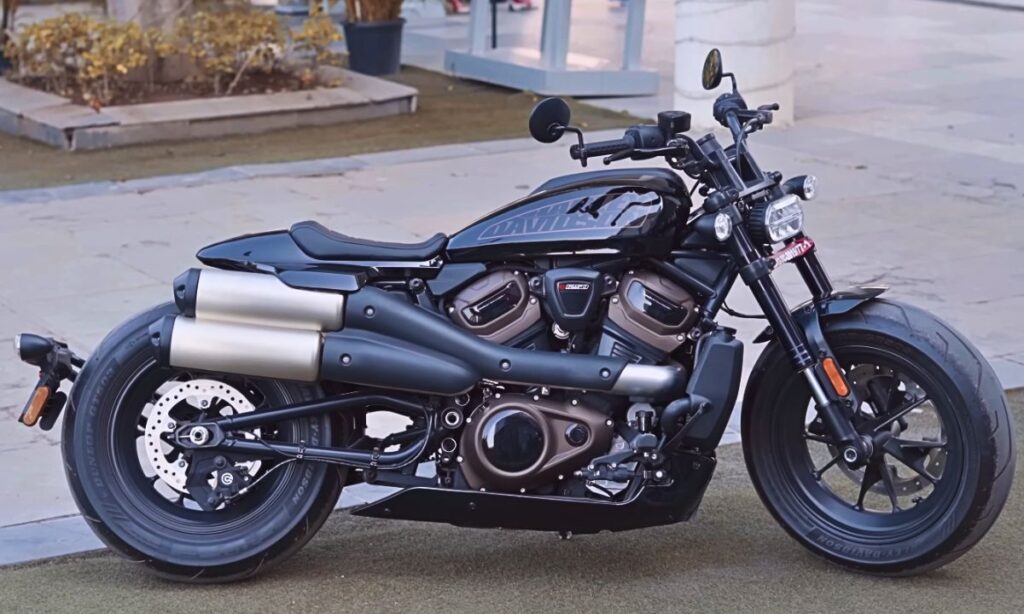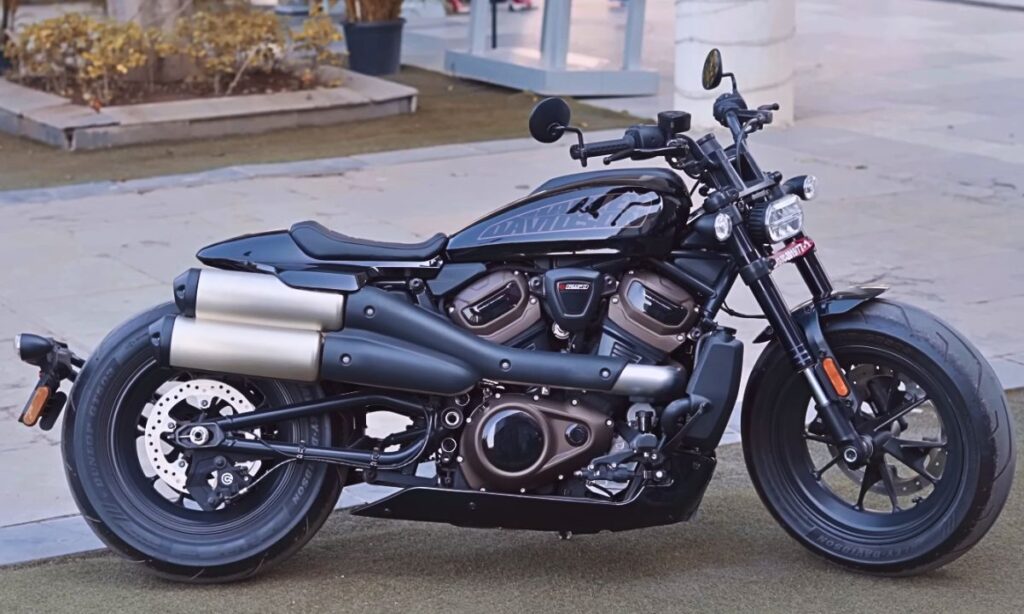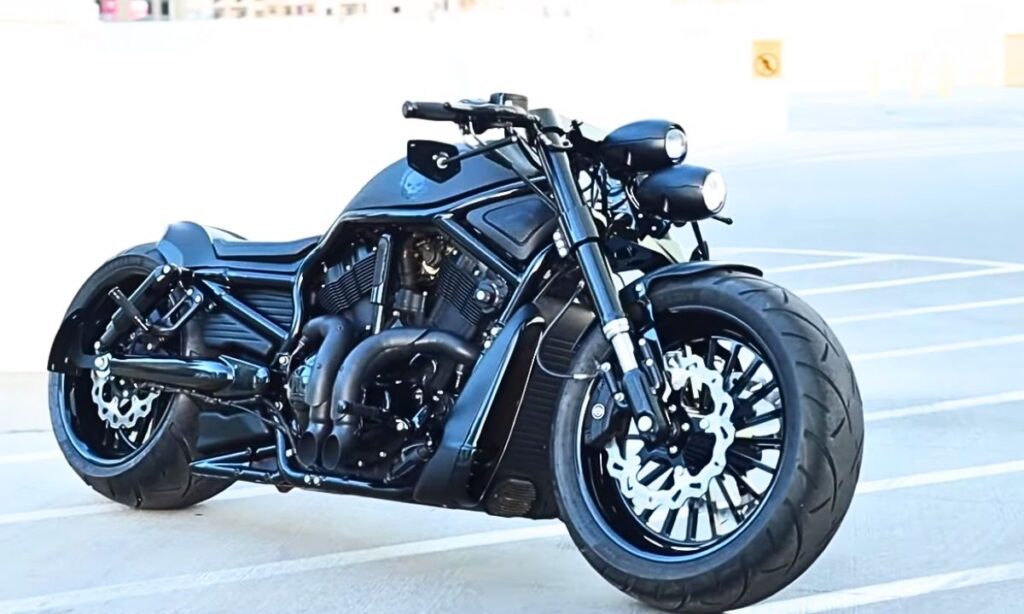When it comes to optimally tuning your Harley, choosing the right exhaust system is crucial.
In this article, we will explore the Harley Exhaust Fitment Chart, which is a guide designed to help you navigate through the variety of exhaust systems available.
It provides detailed information about different exhaust types and their compatibility with specific Harley models.
This chart is an invaluable resource for any Harley owner looking to enhance their bike’s performance while maintaining its distinct roar.
Why Should You Need Harley Exhaust Fitment Chart

Choosing the right exhaust for your Harley Davidson is crucial for aesthetics and performance.
The Harley Exhaust Fitment Chart helps you through the process by providing information tailored to different models and years of Harley motorcycles.
The Fitment Chart is designed to match your specific Harley model with the optimal exhaust system.
It presents the necessary data in an organized manner, showing which exhaust systems are compatible with your motorcycle.
This prevents the hassle of purchasing an incompatible product and ensures the best possible results for performance and sound.
Setting up the exhaust system properly can significantly improve your bike’s power, torque, and throttle response.
It can also influence the overall sound of the motorcycle, adding a deeper and more aggressive note, which many Harley enthusiasts appreciate.
Harley Exhaust Fitment Chart
To use the Harley Exhaust Fitment Chart, start by locating your bike model and year on the chart. Once you have identified this, look across to find the corresponding compatible exhaust systems.
Remember, an exhaust system that fits well will not only improve performance but also ensure the safety and longevity of your motorcycle.
Here is the exhaust fitment chart:
1. Harley Sports
| Model | Exhaust Type | Muffler Type |
| Nightster Special | 2-into-1 | Inside Header |
| Sportster S | 2-1-2 | Inside Muffler |
| Nightster | 2-into-1 | Inside Header |
2. Harley American Grand Touring
| Model | Exhaust Type | Muffler Type |
| Street Glide Special | 2-1-2 | Tapered mufflers |
| Street Glide ST | Dual exhaust (crossover) | NA |
| CVO Road Glide Limited | Dual exhaust (crossover) | NA |
| Road Glide Special | 2-1-2 | Tapered mufflers |
| Road King Special | 2-1-2 | Tapered mufflers |
| Ultra Limited | 2-1-2 | Tapered mufflers |
| Road Glide ST | Dual exhaust (crossover) | NA |
| Road Glide Limited | 2-1-2, 4 | Tapered mufflers |
| Road Glide | 2-1-2 | Tapered mufflers |
| Street Glide | 2-1-2 | Tapered mufflers |
| Electra Glide Highway King | 2-1-2 | Tapered mufflers |
3. Harley Cruiser
| Model | Exhaust Type | Muffler Type |
| Softail Standard | 2-into-2 | Offset shotgun with catalyst inside the muffler |
| Heritage Classic | 2-into-2 | Shorty Dual with Catalyst inside muffler |
| Breakout 117 | 2-into-2 | Offset shotgun with catalyst inside the muffler |
| Low Rider ST | 2-into-2 | Offset shotgun with the catalyst inside the muffler |
| Fat Bob 114 | 2-into-2 | 2-into-2, Shorty Dual with Catalyst inside muffler |
| Lowrider S | 2-into-2 | Offset shotgun with catalyst inside muffler |
| Fat Boy 114 | 2-into-2 | Staggered with the catalyst inside the muffler |
| Street Bob 114 | 2-into-2 | Offset shotgun with catalyst inside the muffler |
4. Harley Adventure Touring
| Model | Exhaust Type | Muffler Type |
| Pan America 1250 | 2-1-1 | Catalyst inside Header |
| PAN America 1250 Special | 2-1-1 | Catalyst inside Header |
Harley Exhaust System Types
Harley-Davidson motorcycles are renowned for their powerful and iconic exhaust systems.
There are three primary types of exhaust systems available for Harleys: the 2-into-1 exhaust system, the true dual exhaust system, and the 2-into-2 exhaust system.
Here is the detailed information on the Harley exhaust systems.
1. Two In One Exhaust
A two-in-one exhaust, also known as a 2-into-1 or 2-1 system, is a type of exhaust system that is commonly used on Harley-Davidson motorcycles. This system combines the exhaust gases from two cylinders into one pipe.
The main advantage of this design is that it allows for improved exhaust scavenging, leading to more efficient fuel combustion and potentially higher horsepower.
The 2-into-1 system typically offers a deeper, throatier exhaust note, which many riders find appealing. However, this type of exhaust may not be as visually symmetric as a dual exhaust system.
2. Two In Two Exhaust
The Two In Two Exhaust system is a popular choice among Harley enthusiasts. This setup, as its name implies, consists of two exhaust pipes, each serving an individual cylinder.
The most significant advantages of a Two In Two Exhaust system are its aesthetic appeal and the unique roar it gives to the Harley’s engine.
The separate pipes can be styled independently, allowing for a wide range of customization options that can complement the bike’s overall design.
Furthermore, the distinctive sound produced by the twin-pipe configuration is hard to replicate, ensuring a memorable auditory experience for the rider and the audience.
3. Two In Two With Crossover
A Two In Two With Crossover exhaust system is a popular choice among Harley owners.
This system, often referred to as a “2-into-2”, features two separate exhaust pipes, each serving one cylinder. However, a key characteristic of this design is the ‘crossover’ pipe that connects the two main pipes.
This crossover aids in balancing the exhaust flow between the two cylinders, which potentially improves overall engine performance.
As a result, the bike may experience smoother acceleration and better fuel efficiency.
This setup is particularly popular among riders who value aesthetics and performance, as it combines the sleek look of dual exhausts with the benefits of a crossover system.
4. Two In Two Without Crossover
Two In Two Without Crossover exhaust systems, often used in Harley motorcycles, are designed for performance and sound enhancement.
In this setup, each of the two cylinders in the engine has its own separate exhaust pipe, not merging with the other.
It enhances the exhaust flow, leading to a potential increase in horsepower and torque.
However, this type of system creates a distinct sound, often described as a “popping” noise, which many motorcycle enthusiasts appreciate for its unique rumble.
However, because there’s no crossover pipe to equalize exhaust pressure, it may lead to less efficient fuel combustion.
5. True Dual Exhaust
True Dual Exhaust is a type of exhaust system often found in Harley motorcycles that is known for its performance enhancement and distinct sound.
In a True Dual Exhaust system, each cylinder gets its own separate exhaust pipe, meaning the exhaust gases from the two cylinders never mix.
This separation allows for a more efficient exhaust flow, potentially increasing horsepower and torque.
True Dual Exhaust systems are known for their deep, throaty sound, a characteristic beloved by many Harley enthusiasts.
How do I install the exhaust on my Harley?
The process of installing an exhaust on your Harley motorcycle can be quite straightforward if you follow the correct steps.
Before you start, ensure you have the right tools at hand: a set of wrenches, a socket set, and some thread locker.
1. Remove Old Exhaust
Start by loosening the clamps holding the old pipes to the headers. Next, remove the bolts holding the mufflers to the frame.
Be cautious to avoid scratches or damage to the surrounding areas.
2. Prepare New Exhaust
Apply a bit of anti-seize compound to the bolts you’ll use to attach the new exhaust. This will make future disassembly easier if needed.
3. Installed New Exhaust
Begin by attaching the new pipes to the headers, but do not fully tighten the clamps yet. This will allow some wiggle room to adjust the alignment of the pipes as needed.
Attach the mufflers to the frame using the new bolts, then go back and tighten the clamps on the headers.
Final Check
Once everything is in place, give your bike a quick inspection. Ensure all fasteners are secure and there are no leaks in the joint areas.
Always remember to wear safety gear when working on your motorcycle for your safety.

Tonmoy, the brains behind the influential motorcycle-focused website, TwoWheller.com, is a dedicated and passionate advocate for biking culture. Born and raised in a family of motorcycle enthusiasts, his love for two-wheeled transportation was ignited at an early age. His commitment to providing in-depth reviews and helpful tips for riders has established him as a respected figure in the motorcycle community.

